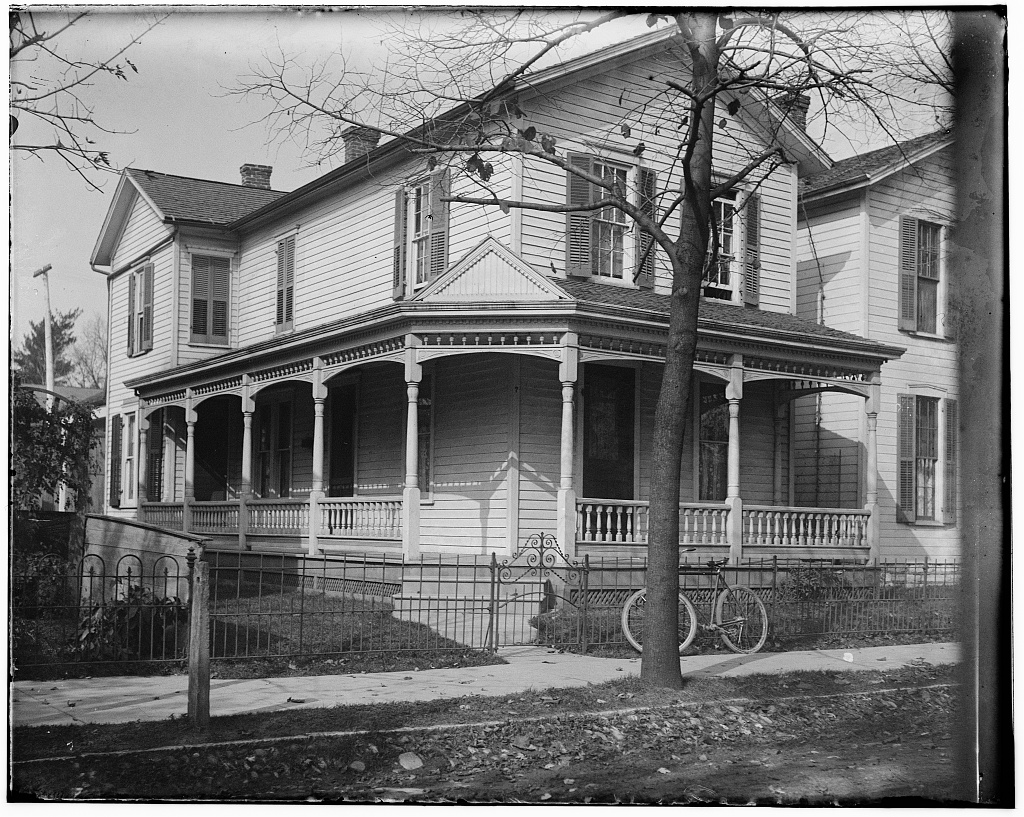
Dayton has a rich history of innovation spanning key inventions in a wide variety of industries, but the most famous is of course the Wright Brothers and their quest to achieve powered flight.
Wilbur and Orville lived and worked in a few different places around the Gem City, and this article will focus on where the Wright house was located when the brothers first delved into aviation and made their major discoveries.
This question can lead to some confusion because the original Wright home was moved away from Dayton, and the later mansion that some family members occupied is located in Oakwood (with a name matching the street where the earlier home stood!).
The Wright Brothers’ Childhood Home (1871-1914)
The original house was located at 7 Hawthorn St in what is today called the Wright-Dunbar neighborhood.
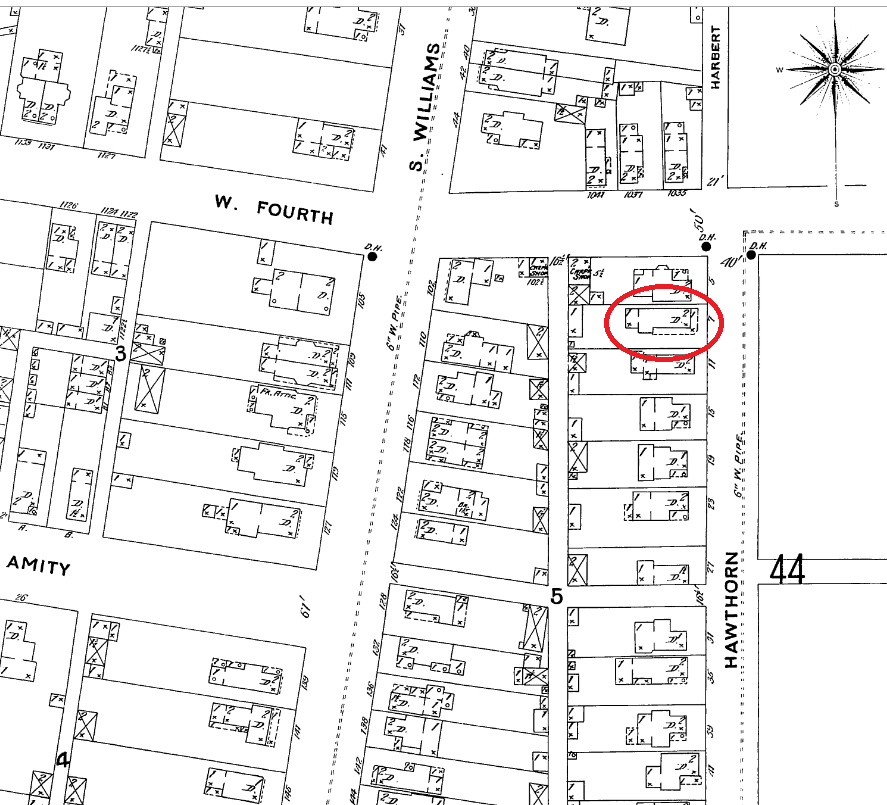
Milton and Susan Wright moved here in early 1871, and this is where Orville was born that year (Wilbur had been born in 1867 in Indiana). Their sister Katharine was also born here in 1874.
But the family did not occupy the house continuously throughout Wilbur and Orville’s childhood due to Milton’s travel as a prominent member of the Church of the United Brethren (he was elected as a bishop in 1877). From 1878 to 1884 the family moved to Cedar Rapids, IA and Richmond, IN before returning to Dayton for good after that.
For a short time after they returned the Wright family actually lived at a different house nearby, 114 N Summit Street, until their tenant moved out of the home on Hawthorn Street in 1885.
It was while living in this house that the Wright brothers began their studies in aviation. After running a printing business and then repairing and manufacturing bicycles in the early to mid 1890s, Wilbur and Orville began tackling the prospect of human flight in late 1896. They would achieve the first powered flight in 1903, develop the first practical airplane at the Huffman Prairie Flying Field in 1904-05, conducted successful flying demonstrations in the US and Europe in 1908, and began to manufacture airplanes in 1909.
The Later Wright Family Mansion – Hawthorn Hill (1914-YEAR)
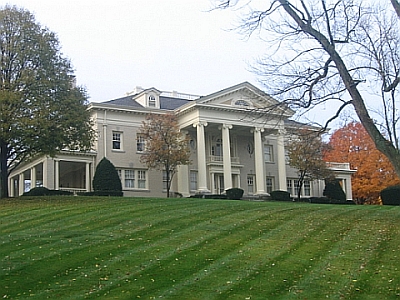
Aided by the fame and wealth stemming from their accomplishments, Wilbur and Orville hired Schenck and Williams, a major Dayton architectural firm, to design a lavish home on 17 acres in Oakwood just south of Dayton.
But Wilbur abruptly died in 1912 before the home was completed. In 1914, Orville, Milton, and Katharine moved in. Orville would die in 1948, and after that the home was owned by National Cash Register (NCR). In 2007 it was acquired by Dayton History which also operates Carillon Park and the Patterson Homestead, and today offers public tours of the mansion. (The homestead is now 3 acres after much of the surrounding land was sold off.)
What Happened to the Wright Brothers’ Dayton House?
The home at 7 Hawthorn Street only remained in Dayton for a couple of decades after the Wrights vacated it. It was moved to Greenfield Village in Dearborn, MI by Henry Ford in 1936 along with one of their cycle shops.
Dan Barton, a local preservationist who has advocated for reconstruction projects of lost landmarks at their original sites such as the Deeds Barn, has commented on the fact that only an “inaccurate porch fragment” today exists at the Wright house site, while “the potential for an accurate NPS-compliant reconstruction was not undertaken on the original site.”
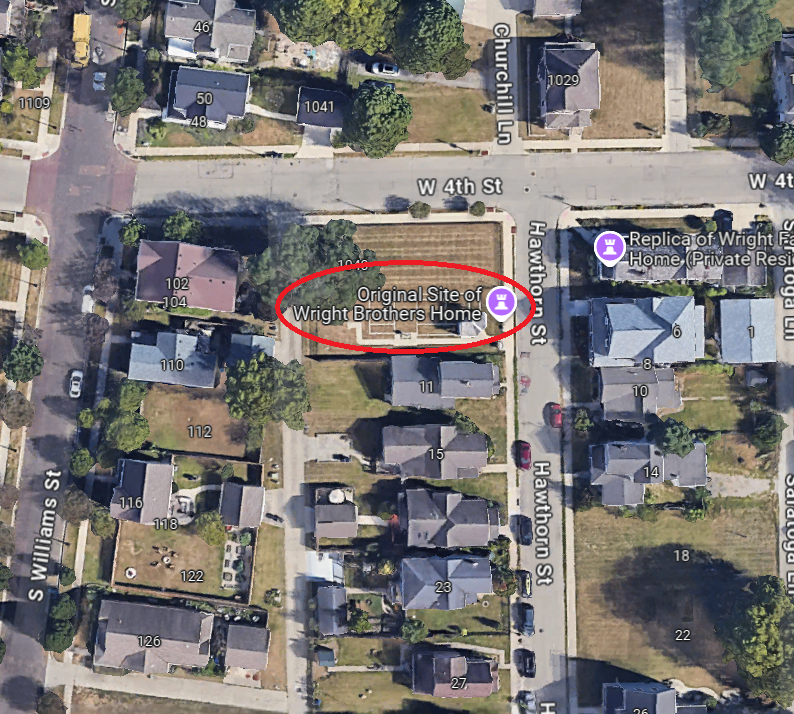
Why Was the Wright Brothers’ Home Moved?
Many in Dayton today lament that fact that such a prominent historic site was moved away from the city. At the time, there wasn’t much backlash, and the move was strongly supported by Orville.
Many thought that moving the home and shop was the best way to ensure its long-term preservation, as automobile-fueled growth of outlying and suburban neighborhoods was already causing inner-ring urban neighborhoods like the Wrights’ to suffer vacancy and decline (see the Wrights’ own move from West Dayton to Oakwood as indicative of the trend).
The book Twelve Seconds to the Moon by Rosamond Young describes the events surrounding the house move as follows:
“Henry Ford who was building Greenfield Village at Dearborn, Michigan, wanted the old Wright home at 7 Hawthorn Street and the West Third Street Bicycle Shop for his village. He inquired of Orville whether he could buy them. The home had been in Katharine Wright’s name and she had sold it before her death in 1929 to Charlotte Jones, the Wright laundress. One day in 1936 Charlotte Jones answered a knock on the door at 7 Hawthorn Street. Standing on the porch were Mr. Orville and a thin man Mr. Orville introduced as Henry Ford. The two men sat on the sofa facing her. ‘Mr. Ford is building a museum and village at Dearborn, Michigan. He would like to move this house and the shed behind it and the bicycle shop to the village. He would like to buy the furnishings along with the house. Now Charlotte, will you sell to Mr. Ford?’ ‘Well, Mr. Orville, if you say so, I will'” (Quoted in Yanney).
A Dayton Journal article in 1936 was titled “Daytonians Stirred to New Appreciation of Wright Brothers by Removal of Old Building, Some Approve, Others Lament Purchase by Henry Ford.” Another article that year stated that “Daytonians need not lament that there is nothing left which bears a distinct relationship to these two boys and their epochal achievement” but then pointed to the 7 Hawthorn Street house (which was not yet publicly announced to be moving with the cycle shop), the laboratory at 15 Broadway Street (later demolished) and the hangar at Huffman Prairie (also left to deteriorate) (Yanney). So perhaps a lament was appropriate after all.
One landmark that does remain is the bicycle shop at 22 South Williams Street that the Wrights occupied from 1895-1897, which was long forgotten and slated to be demolished in the 1980s but was instead rehabilitated, listed as a National Historic Landmark in 1990, and is today a museum open to the public.
Image credits: Hawthorn St: Library of Congress; Hawthorn Hill: DaytonCVB; historic map: Sanborn Fire Insurance Maps
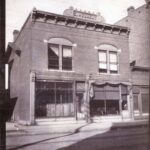
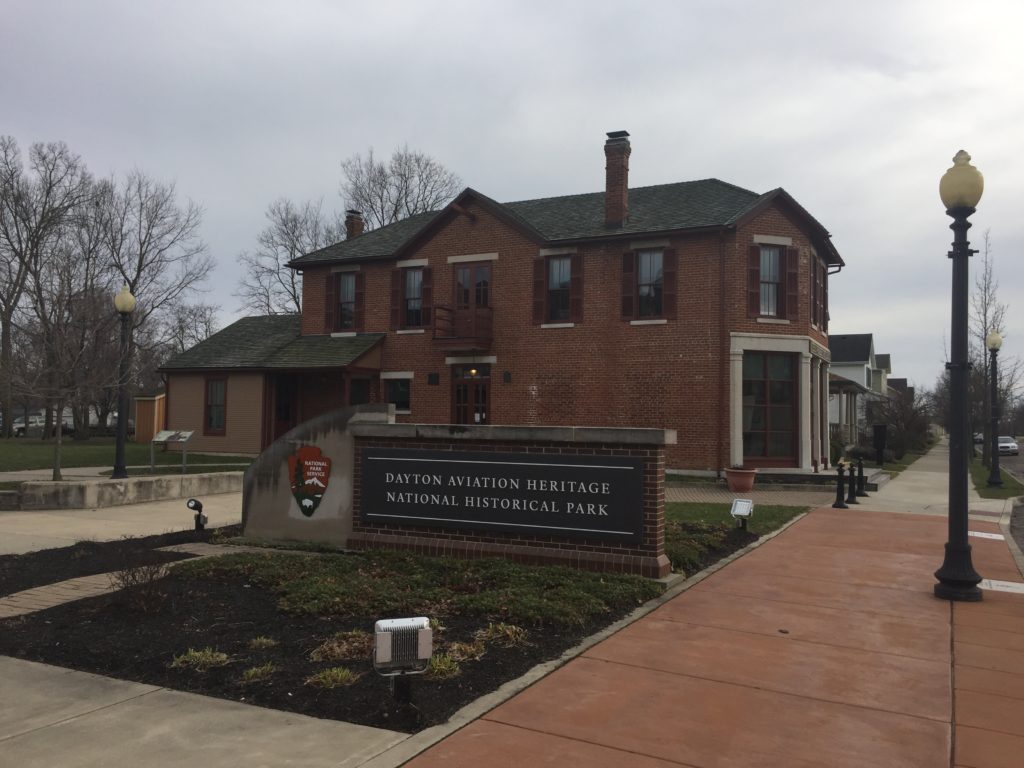
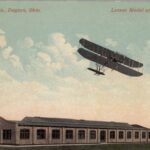
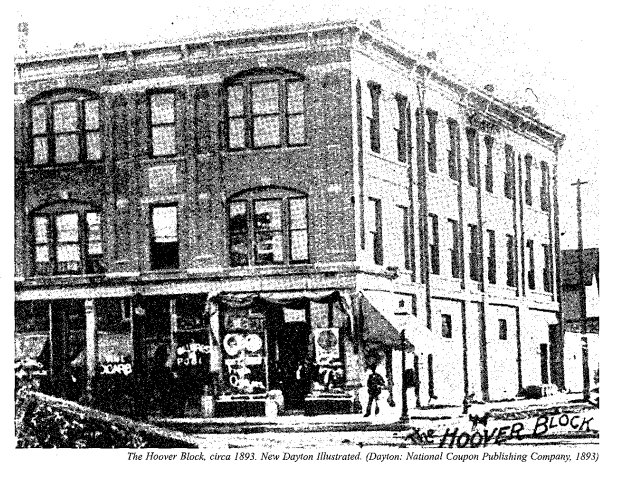
Leave a Reply